Виджет авторизации/en: различия между версиями
Новая страница: «== '''Widget Setup:''' == {{Note|The authorization widget is set up by the user upon login. |warn}} {{Note|For example, the Google authorization page will be used. |warn}} === '''Widget Acquisition:''' === This archive is integrated into the personal cabinet. It can be added under the "Content" section, within the "Widgets" tab. Integration takes place by dragging and dropping the archive from the repository where it's stored into the personal cabinet window...» |
Новая страница: «=== '''Creating a Broadcast''' === # Initially, navigate to the main panel. # In the "Broadcasts" section, select "Create".<br> # In the newly opened window, go to the top of the screen and click on the "gear" icon. In the dropdown menu, set the parameters for "Width" and "Height". Click save. By default, the orientation is set to horizontal at 1920x1080. # Click on a special icon to select the broadcasting zone. File:Разрешение.png|thumb|center...» |
||
| Строка 23: | Строка 23: | ||
Following this, the widget will be stored inside your personal cabinet | Following this, the widget will be stored inside your personal cabinet | ||
[[File:IG.png|thumb|center|An example of displaying the transfer of a widget to a personal account|150px]] | [[File:IG.png|thumb|center|An example of displaying the transfer of a widget to a personal account|150px]] | ||
=== '''Creating a Broadcast''' === | |||
=== ''' | # Initially, navigate to the main panel. | ||
# | # In the "Broadcasts" section, select "Create".<br> | ||
# | # In the newly opened window, go to the top of the screen and click on the "gear" icon. In the dropdown menu, set the parameters for "Width" and "Height". Click save. By default, the orientation is set to horizontal at 1920x1080. | ||
# | # Click on a special icon to select the broadcasting zone. | ||
# | [[File:Разрешение.png|thumb|center| Resolution setting |150px]] | ||
[[File:Разрешение.png|thumb|center| | [[File:Подготовка экрана.png|thumb|center| Broadcast preparation |150px]] | ||
[[File:Подготовка экрана.png|thumb|center| | === '''Adding a Widget:''' === | ||
=== ''' | [[File:Время 10400.png|thumb|right|Setting the broadcast duration|150px]] | ||
[[File:Время 10400.png|thumb|right| | After the user has set up the broadcast, they need to add a widget..<br> | ||
* Click on the working field and a menu named "content" appears on the right side of the screen. This menu displays several folders with sorted content and a main folder containing all content uploaded to the system. | |||
* | * The widget can be found in this list.Drag and drop it into the working field.<br> | ||
* | * Under the "Content Settings" tab on the right side of the screen, set the duration to 10400 seconds. | ||
* | [[File:Добавление виджета в трансляцию.png|thumb|center|Widget search and "Content" sectio |150px]] | ||
[[File:Добавление виджета в трансляцию.png|thumb|center| | [[File:Перенос виджета.png|thumb|center| Moving a widget to the working area |150px]] | ||
[[File:Перенос виджета.png|thumb|center| | |||
<div lang="ru" dir="ltr" class="mw-content-ltr"> | <div lang="ru" dir="ltr" class="mw-content-ltr"> | ||
=== '''Подготовка подложки''' === | === '''Подготовка подложки''' === | ||
Версия от 15:24, 18 августа 2023
Description of the situation:
Users periodically need to upload content from their website. To access the content, they often need to go through the authorization process. To avoid manual authentication and fully automate the process, an authorization widget was created.
Widget Workflow Logic:
- To Prepare the Broadcast
- The user navigates to the authorization page and copies the URL of the page.
- On the same page, the user expands the "Login" window to full screen by pressing "F11".
- The user does the same for the "Password" window.
- Screenshots are saved on the user's device.
- The user accesses the SmartPlayer personal cabinet.
- Inside the personal cabinet, the user creates a folder for the screenshots and transfers them there.
- The user launches the widget according to the instructions and inputs the required data.
- The user logs in using the widget and can continue to showcase the content.
Note: If the user is using a laptop as their device, pressing "F11" may not result in any action. This is because, by default in their operating system, the "Function panel use" option might be enabled. In such a case, to expand the browser page, they will need to press the "Fn + F11" keys.
Widget Setup:
Widget Acquisition:
This archive is integrated into the personal cabinet. It can be added under the "Content" section, within the "Widgets" tab.
Integration takes place by dragging and dropping the archive from the repository where it's stored into the personal cabinet window.
Following this, the widget will be stored inside your personal cabinet

Creating a Broadcast
- Initially, navigate to the main panel.
- In the "Broadcasts" section, select "Create".
- In the newly opened window, go to the top of the screen and click on the "gear" icon. In the dropdown menu, set the parameters for "Width" and "Height". Click save. By default, the orientation is set to horizontal at 1920x1080.
- Click on a special icon to select the broadcasting zone.
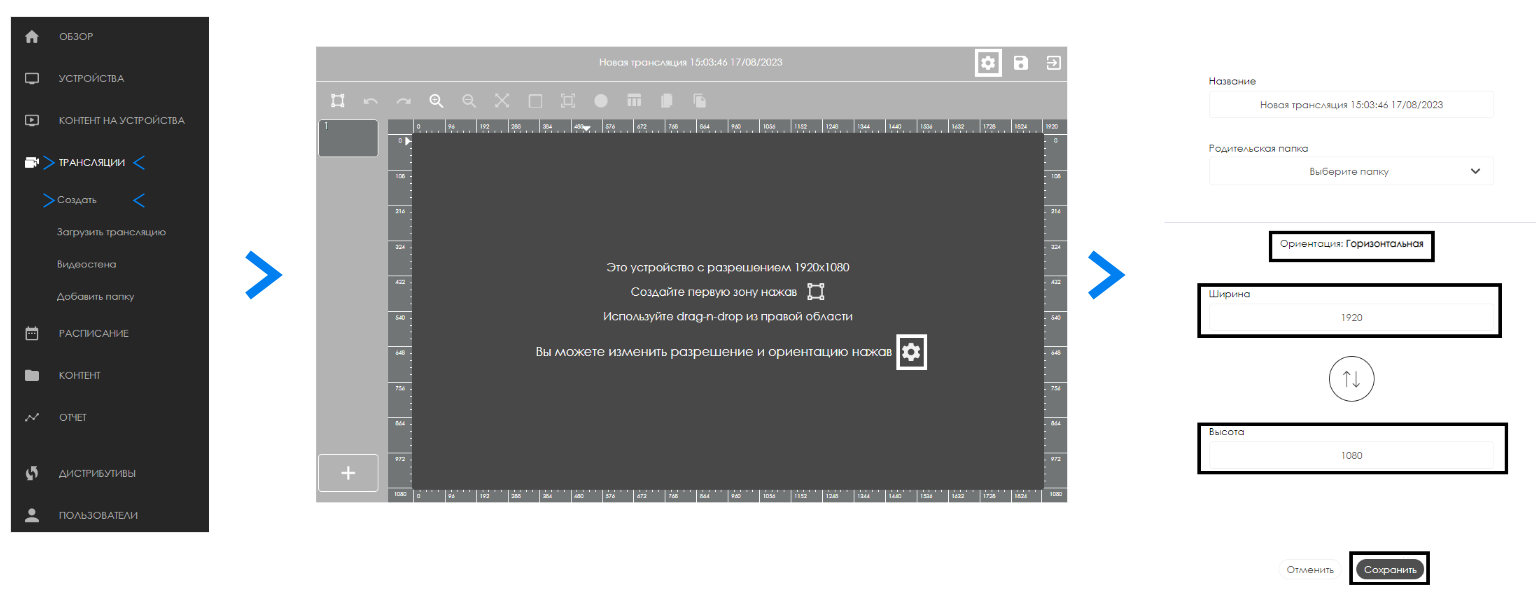

Adding a Widget:
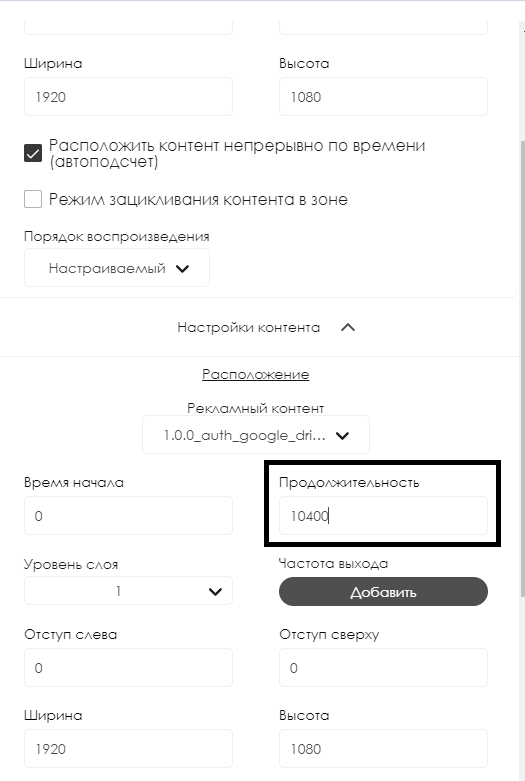
After the user has set up the broadcast, they need to add a widget..
- Click on the working field and a menu named "content" appears on the right side of the screen. This menu displays several folders with sorted content and a main folder containing all content uploaded to the system.
- The widget can be found in this list.Drag and drop it into the working field.
- Under the "Content Settings" tab on the right side of the screen, set the duration to 10400 seconds.


Подготовка подложки
В браузере открываем страницу авторизации Google, включаем полноэкранный режим (по умолчанию F11) и делаем полный скриншот. Далее вводим логин и переходим на страницу с вводом пароля, аналогично делаем скриншот экрана. Создаем отдельную папку во вкладке «Контент» и добавляем туда сделанные скриншоты.
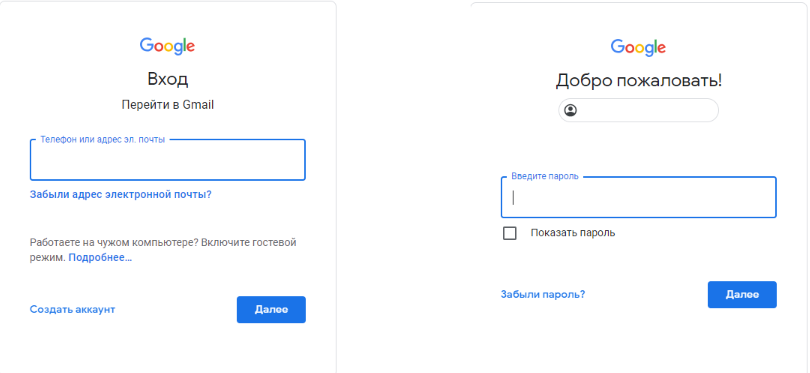
Работа с виджетом
Настройка виджета

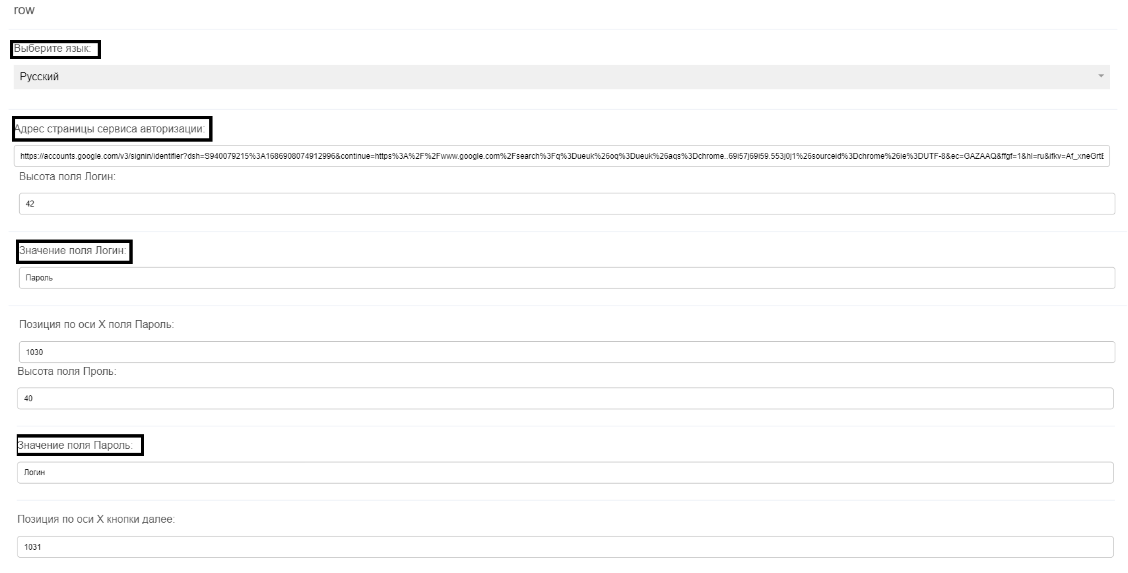
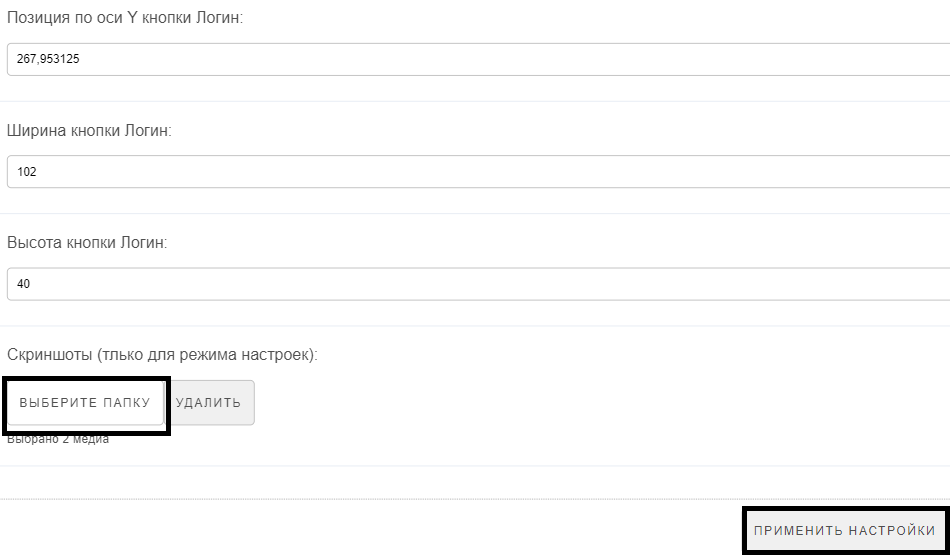
После всех подготовительных мероприятий необходимо перейти в настройки виджета. В открывшемся окне можно увидеть области виджета, которые можно перемещать. Справа сверху нужно нажать на "Шестерёнку" и открыть окно настройки параметров виджета. В них мы указываем :
- Указываем адрес страницы авторизации в графе "Адрес страницы сервиса авторизации".
- Заполняем строку "Значение поля логина" и "Значение поля пароль". Также можно воспользоваться альтернативным вариантом и заполнить данные на окне подложки
- Далее скролим в самый низ страницы настроек и выбираем папку, где хранятся скриншоты. Нажимаем «Сохранить» и «Применить настройки»
- После у нас отобразились наши скриншоты и поля, в которых указаны данные прописанные в настройках виджета.
- Слева внизу появляется переключатель скриншотов подложки.
Манипуляции с подложками
Выбираем скриншот с логином, он обычно идёт как "Scrennshot 1"в нём совмещаем контуры окна "логин" и подставляем его в поле "логин".
Кнопку «далее» совмещаем с прямоугольником «next».
Переходим на следующий скриншот "Scrennshot 2". Поле «пароль» совмещаем по контуру с окном «пароль».
На кнопку «далее» на скриншоте с паролем подставляем «Authorize».
Нажимаем кнопку «Сохранить».
Далее даем название нашей трансляции, сохраняем ее и запускаем на устройстве.
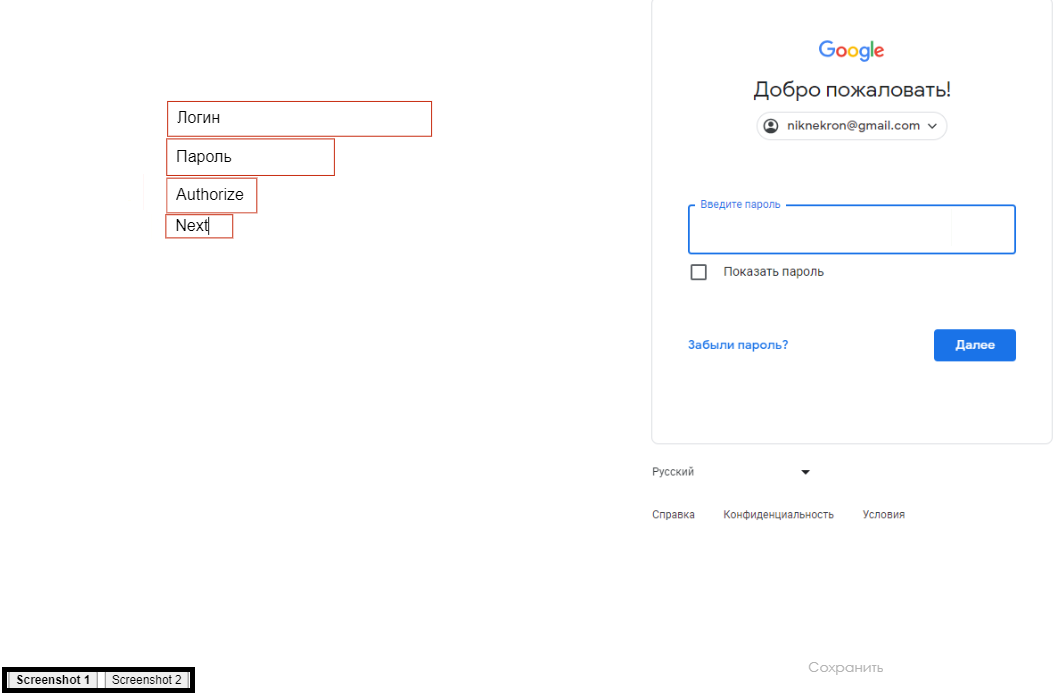
Внешний вид виджета
Виджет использует в качестве рабочего экрана область скриншота. Он состоит из четырёх блоков:
- Логин - прямоугольная область с данными. В эту строку вставляется электронная почта. Совмещаем с областью "логина" на скриншоте
- Пароль - прямоугольная область с данными. В данную строку прописывают пароль. Совмещаем с областью "пароля" на скриншоте.
- Authorize - прямоугольная область, которая производит нажатие кнопки (кликер). Совмещаем с кнопкой "авторизация" на скриншоте.
- Next - прямоугольная область, которая производит нажатие кнопки (кликер). Совмещаем с кнопкой "далее" на скриншоте
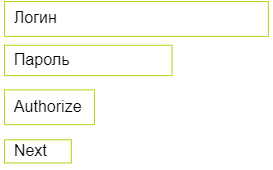
Итоговый результат
Использование виджета позволит сохранить пользователю конфиденциальность своих данных и при этом он сможет использовать систему автологинизации.